The more environmental issues grow, the more we must focus on sustainability, especially if we are architects. Building materials become extremely important to reduce environmental impact, enhance energy efficiency, and create healthier living spaces. They also help conserve natural resources and build resilient and long-lasting structures. With this article, we wanted to provide a quick guide to some key sustainable building materials and their benefits.
Bamboo is a fast-growing plant that can be harvested without killing it. This feature makes it a renewable resource and a highly sustainable option for construction. This material is mainly associated with South Asia and South America, especially in constructing houses and bridges.

Renewability: Grows much faster than traditional timber.
The Green School in Bali, Indonesia, uses bamboo extensively, showing its potential in sustainable architecture.
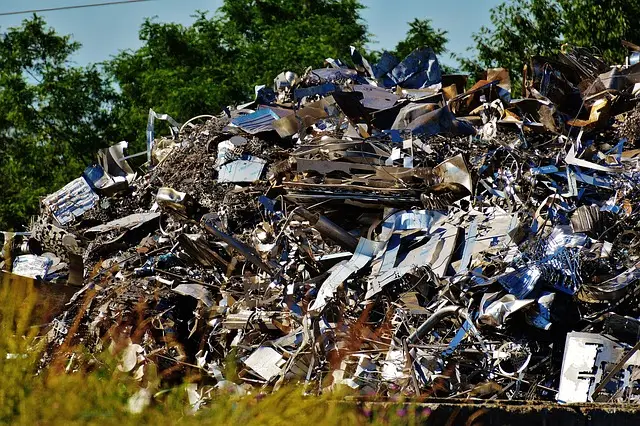
Recycled steel is made from scrap metal, reducing the need for new steel production. According to the Worldsteel Association, “steel is the world’s most recycled material and 100% recyclable,” and in 2021, 680 million tonnes of steel had been recycled. As it can be recycled infinitely without loss of property, it is one of the most sustainable building materials.
The Bank of America Tower in New York City incorporates recycled steel, emphasising sustainability in urban skyscrapers.
Hempcrete is a bio-composite material made from hemp fibres and lime. It is an excellent insulator and can be used to insulate the interior and exterior of existing buildings and fill wooden frames in new constructions.
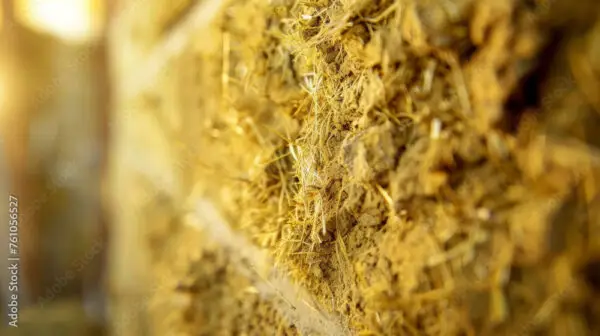
The IsoHemp House in Belgium demonstrates the practical application of hempcrete in residential construction.
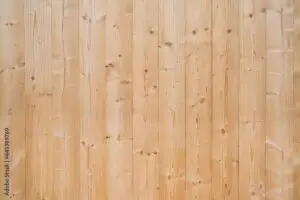 Cross-laminated timber (CLT) is an engineered wood product made by stacking layers of solid-sawn lumber perpendicular to each other and bonding them with structural adhesives. This technique provides strength, stability, and rigidity. CLT is suitable for various structural applications, such as walls, floors, and roofs. The panels are prefabricated and can be assembled quickly on-site, which reduces construction time and labour costs. So, CLT is one of the sustainable building materials. It utilises renewable resources and stores carbon, which means that it contributes to a lower environmental impact than traditional construction materials.
Cross-laminated timber (CLT) is an engineered wood product made by stacking layers of solid-sawn lumber perpendicular to each other and bonding them with structural adhesives. This technique provides strength, stability, and rigidity. CLT is suitable for various structural applications, such as walls, floors, and roofs. The panels are prefabricated and can be assembled quickly on-site, which reduces construction time and labour costs. So, CLT is one of the sustainable building materials. It utilises renewable resources and stores carbon, which means that it contributes to a lower environmental impact than traditional construction materials.
The Stadthaus in London is a nine-story residential building which was constructed using CLT.
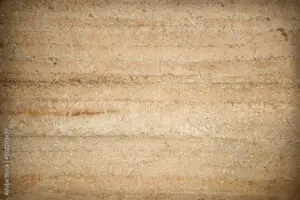 Rammed earth is a technique to construct foundations, walls and floors. It involves compacting a mixture of damp soil, sand, gravel, and sometimes stabilisers like cement or lime into layers within a formwork to create building components. This ancient method has been used for thousands of years. The natural aesthetic and minimal environmental impact make rammed earth attractive for eco-friendly building projects.
Rammed earth is a technique to construct foundations, walls and floors. It involves compacting a mixture of damp soil, sand, gravel, and sometimes stabilisers like cement or lime into layers within a formwork to create building components. This ancient method has been used for thousands of years. The natural aesthetic and minimal environmental impact make rammed earth attractive for eco-friendly building projects.
The Great Wall of China is one of the most historical examples of the usage of rammed earth.
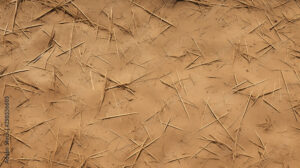 Straw-bale construction is a building method that uses bales of straw, typically wheat, rice, rye, or oat straw. Bales of straws can be used as structural elements, insulation, or both. The technique can involve stacking bales within a frame or using them as load-bearing walls. It can be covered with plaster. This method is accepted as eco-friendly, using a renewable and biodegradable agricultural byproduct. It is also cost-effective, contributing to buildings’ sustainability and energy efficiency.
Straw-bale construction is a building method that uses bales of straw, typically wheat, rice, rye, or oat straw. Bales of straws can be used as structural elements, insulation, or both. The technique can involve stacking bales within a frame or using them as load-bearing walls. It can be covered with plaster. This method is accepted as eco-friendly, using a renewable and biodegradable agricultural byproduct. It is also cost-effective, contributing to buildings’ sustainability and energy efficiency.
Fri & Fro (Free and Happy) ecoVillage in Egebjerg, Denmark, is an example of straw-bale construction.
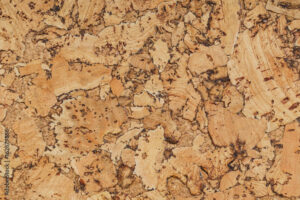 Cork is a natural, renewable material harvested from the bark of cork oak trees (Quercus suber). The harvesting process does not harm the tree, and the process itself allows it to regenerate its bark. The material is highly valued for its unique properties, such as being lightweight, buoyant, elastic, and impermeable to liquids and gases. These characteristics make cork suitable for various applications, including wine stoppers, flooring, insulation, soundproofing, and even fashion and design. Its sustainability and versatility make it an eco-friendly choice for many industries.
Cork is a natural, renewable material harvested from the bark of cork oak trees (Quercus suber). The harvesting process does not harm the tree, and the process itself allows it to regenerate its bark. The material is highly valued for its unique properties, such as being lightweight, buoyant, elastic, and impermeable to liquids and gases. These characteristics make cork suitable for various applications, including wine stoppers, flooring, insulation, soundproofing, and even fashion and design. Its sustainability and versatility make it an eco-friendly choice for many industries.
Cork House in the UK uses cork as a primary building material, demonstrating its versatility and sustainability.
Incorporating sustainable materials into construction practices is not just a trend but a necessity for a healthier and more sustainable future. Bamboo, recycled steel, hempcrete, cross-laminated timber, rammed earth, straw bale, and cork are just a few examples of how the industry is evolving to meet environmental challenges. By choosing these materials, we can reduce our carbon footprint, conserve natural resources, and create more sustainable living environments.
Join us at our upcoming Sustainability Conference to gain more insights into sustainable architecture and explore the latest innovations. This event brings together experts from various fields to discuss cutting-edge developments in sustainable architecture. Learn more about the conference here.
By embracing these materials and participating in events like our conference, you can contribute to a greener, more sustainable future in architecture.
Bamboo and sustainable construction. (2023). In Environmental footprints and eco-design of products and processes. https://doi.org/10.1007/978-981-99-0232-3
Minke, G., Friedemann, M. (2005). Building with Straw: Design and Technology of a Sustainable Architecture. Birkhauser Verlag AG.
Peacock, A. (2023). Top 10 tallest mass-timber buildings around the world. Dezeen Timber Revolution Series. https://www.dezeen.com/2023/03/29/worlds-tallest-buildings-mass-timber-revolution/
RIBA, (2019). RIBA South Award Winners. https://www.architecture.com/awards-and-competitions-landing-page/awards/riba-regional-awards/riba-south-award-winners/2019/cork-house
Stanwix, W., Sparrow, A. (2014). The Hempcrete Book: Designing and building with hemp-lime. Green Books.
Straw Bale ecoVillage homes. (n.d.). http://naturalhomes.org/timeline/freeandhappyecovillage.htm
Worldsteel Association, (2023). Steel – the permanent material in the circular economy. Retrieved on 21 May 2024 from https://worldsteel.org/publications/bookshop/steel-permanent-circular-economy/?do_download_id=2801be14-8237-4d8c-b52b-d122bc3bfa32
Sign in to continue
Not a member yet? Sign up now

Administrative Assistant
Deniz Bol is the Administrative Assistant at SPACE Studies, where she supports the day-to-day operations and contributes to the smooth functioning of the organization. Alongside her administrative role, Deniz is an artist with a passion for creative expression. She is currently pursuing her studies at the University of the Arts London (UAL), where she continues to develop her artistic practice. Her organizational skills, paired with her artistic background, make her a valuable asset to the SPACE Studies team, helping bridge the worlds of administration and creativity.
E-mail: denizbol@spacestudies.co.uk

Digital Marketing Consultant
Murat Oktay is the Digital Marketing Consultant at SPACE Studies, where he provides strategic guidance to enhance our digital presence and community engagement. With a keen eye for digital marketing trends and best practices, Murat plays a key role in refining our content strategy, expanding our online reach, and connecting with a wider audience. His expertise in digital tools and innovative marketing techniques aligns with SPACE Studies’ mission as a social enterprise, ensuring that our campaigns are impactful and resonate with our commitment to social responsibility in architecture and design. Outside his work with SPACE Studies, Murat stays at the forefront of digital marketing advancements, continually exploring new tools and sharing his insights with peers.
E-mail: muratoktay@spacestudies.co.uk

Marketing Manager
Santa Noella Matabaro is the Marketing Manager of SPACE Studies, bringing her expertise in strategic planning, community engagement, and relationship-building to the organization’s mission as a social enterprise. With a background in Politics & Law from the University of Kent, Santa combines analytical insights with a creative approach to advancing SPACE Studies’ vision of fostering interdisciplinary dialogue in architecture, design, and urban planning. In her role, she develops targeted campaigns and strategic partnerships, building brand presence and fostering meaningful connections with the community. Santa’s collaborative and people-centered approach enhances SPACE Studies’ impact, aligning with its commitment to social responsibility and innovation in the built environment.

Academic Content Coordinator
Betul Uckan is an architect and dedicated academic with a background in both architectural practice and research. She holds a Master of Science in Architectural Design and a Bachelor’s degree in Architecture from Istanbul Technical University, where she cultivated her interests in architectural theory and design. Betul has gained experience as a research assistant in various universities, contributing to design studios and foundational courses. She has also worked in the field as an architect with projects focused on design, modeling, and construction, and has been involved in notable projects, including Maltepe Piazza and Emaar Square in Istanbul. With her expertise spanning both digital and material architecture, Betul brings a dynamic, interdisciplinary approach to her role as the Academic Programme Coordinator.
E-mail: betuluckan@spacestudies.co.uk

Senior Researcher & Managing Editor
Arghavan Pournaderi is a senior researcher in the field of architectural conservation and restoration, with an academic foundation in architecture and specialized expertise in historic sites and buildings. Completing her PhD at the Art University of Isfahan, Iran, in 2019, her research has contributed to the understanding of Iran’s architectural heritage, with a focus on Isfahan’s urban and architectural evolution during the Safavid period. In addition to her extensive research, Dr. Pournaderi has held academic positions at various institutions in Isfahan, teaching at both undergraduate and graduate levels. Her work extends beyond academia as she contributes to SPACE Studies as Senior Researcher & Managing Editor, where she oversees scholarly initiatives that foster deeper interdisciplinary dialogue in architecture and heritage conservation.

Senior Researcher & Educational Consultant
Gregory Cowan is a Senior Researcher and Educational Consultant at SPACE Studies, where he leads initiatives that bridge academic research and practical application in architecture and urban design. He contributes his extensive experience to mentoring postgraduate students, designing educational workshops, and guiding community-focused projects. Gregory is also a freelance academic at the University of Wales Trinity St David and the University of Westminster, and founder of The Architects Coach. His expertise spans architectural workspace analysis, professional development, and positive intelligence coaching.
E-mail: gregorycowan@spacestudies.co.uk

Senior Researcher
Alison Hand is a Senior Researcher at SPACE Studies. She is a painter and writer with an MA in Painting from the Royal College of Art. Alison’s work focuses on creating absurd, unstable heterotopic spaces and dialogues with painting history. She is currently the Artist in Residence for King’s College London Philosophy Department on the Dreams and Wakeful Consciousness Research Project, exploring themes of time and simultaneity in new work. Alison has received numerous awards for her painting and is currently working with Bloomsbury Publishers on a major essay on Drawing in Contemporary Art. She is also the BA Fine Art Programme Leader at Art Academy London and co-director of Cement Arts. Her role at SPACE Studies involves leading research projects, mentoring junior researchers, and contributing to our artistic and academic initiatives.
E-mail: alisonhand@spacestudies.co.uk

Senior Researcher
Julian Wild is a Senior Researcher at SPACE Studies and the Sculpture Program Leader at The Art Academy London. With over 30 years of experience in creating and exhibiting sculptures, Julian has worked with high-profile clients such as Cate Blanchett and the University of Oxford. A fellow and former vice president (2015-2019) of the Royal Society of Sculptors, his work has been featured at venues like Modern Art Oxford and Chatsworth House. At SPACE Studies, Julian leads research projects, mentors junior team members, and conducts workshops that blend art and urban studies. In his free time, he enjoys attending academic conferences and crafting new sculptures.
E-mail: julianwild@spacestudies.co.uk

Director of Publications & Senior Researcher
Elif Suyuk Makakli (Associative Professor) earned her PhD in Architecture from the Vienna University of Technology, where she studied the impact of technology on architecture under Prof. William Alsop. With extensive experience in architectural practice in Istanbul and Vienna, she is now an Associate Professor at FMV Isik University, focusing on design education and technology. At SPACE Studies, Elif serves as both the Head of Publications and Senior Researcher, guiding scholarly content and contributing to research initiatives. She is dedicated to mentoring and fostering design innovation.
E-mail: elifsmakakli@spacestudies.co.uk

Director of Research
Sanaz Shobeiri is an architect, urban designer, and landscape urbanist, currently a postdoctoral researcher in the Department of Planning at Queen’s University Belfast. Her research focuses on age-gender inclusiveness and the interplay of architectural, historical, political, and sociocultural dimensions in urban spaces, exemplified by her project on city centres in Belfast and Tehran. Sanaz holds a PhD in Urban Planning from the University of Tehran and has a robust portfolio in sustainability and urban theory. As Head of Research at SPACE Studies, she leads innovative research initiatives, fostering collaboration and academic excellence. In her free time, Sanaz enjoys exploring urban landscapes and supporting community development.
E-mail: sanazshobeiri@spacestudies.co.uk

Creative Director
Selin Gulce Sozmen is the Creative Director at SPACE Studies, where she leads the artistic vision and design strategy for the organisation. With a background in graphic design and visual arts, Selin has been instrumental in creating visually captivating books, journals, and event posters. Her role extends to developing and coordinating workshops and creative projects, ensuring that all visual materials meet the highest standards of quality and innovation. Selin’s dedication to creativity and excellence drives the visual and creative direction of SPACE Studies, making her an essential part of the team.
E-mail: selinsozmen@spacestudies.co.uk

Founder & Executive Director
Pinar Engincan is the Founder and Executive Director of SPACE Studies, an innovative social enterprise focused on fostering interdisciplinary dialogue and education in architecture and urban design. With extensive experience as a lecturer and researcher, Pınar holds a PhD in Architecture and has led numerous academic initiatives. Her career includes curriculum development, international collaborations, and research on housing and urban policies. Passionate about bridging academia and community, she champions accessible education and consultancy services, empowering individuals to shape the built environment.
E-mail: pengincan@spacestudies.co.uk